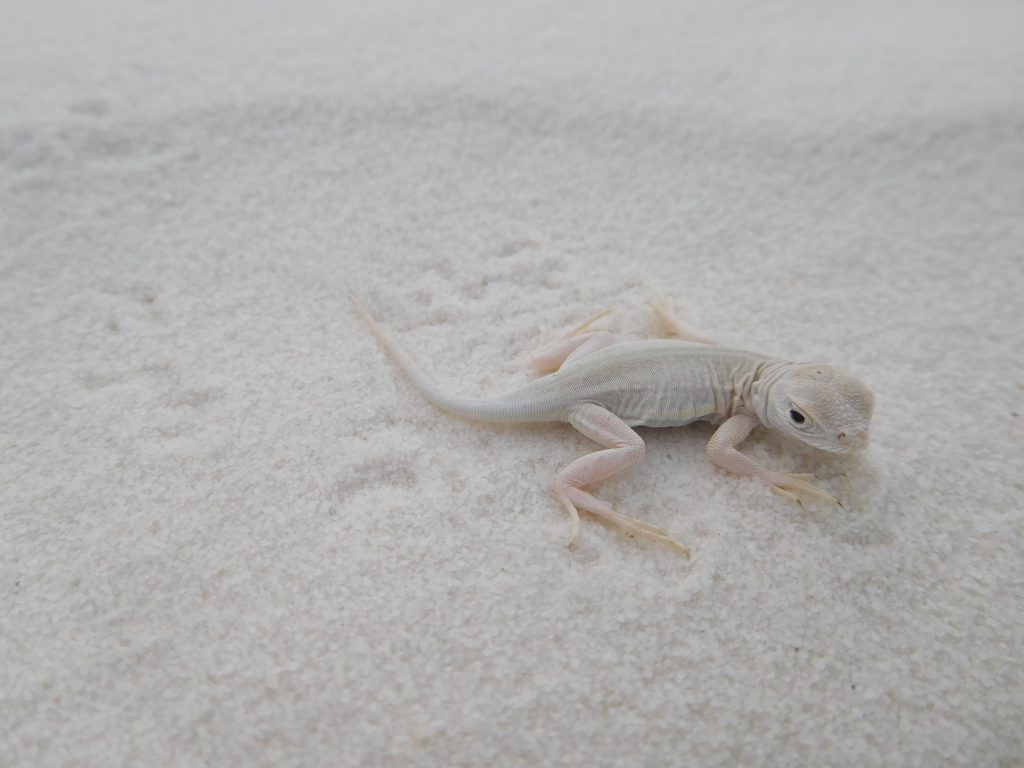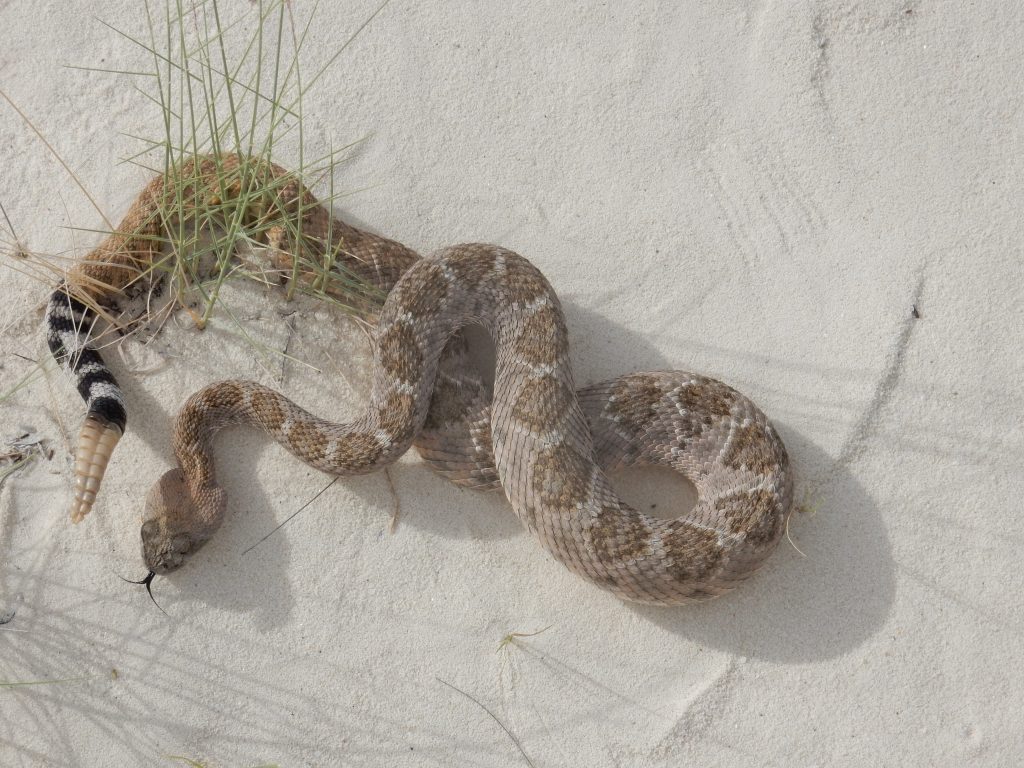
Feel free to contact Clay at cnoss @ berkeley. edu if you have questions or comments regarding the content here.
I had a glimpse of Clay’s caliber as a scientist even before he joined my lab. During one of our first skype calls, Clay wanted to talk about how to test a particular ecological theory in one of my study systems. It is humbling and fabulous when a prospective graduate student is thinking more deeply about your research system than you are! Since that time, I have always considered Clay to be an inspirational idea machine. He thinks about research deeply and from many angles, he dreams up ambitious projects to test fundamental ideas in ecology and evolution, and he exhibits tremendous grit in his follow-through. Clay’s thoughtful nature extends to everything that he does – his science, his mentoring of undergraduates, his outreach work with elementary school students, and his commitment to create a thriving intellectual culture in the lab. It has been a tremendous honor to be part of Clay’s PhD journey. My only real regret is that I can’t give this introduction in person, because I have a wickedly funny video of Clay pretending to be a frog that I wanted to show you. So, for now, I will just raise a glass remotely to this milestone in Clay’s journey. Clay’s sense of humor, dedication, and passion for the natural world will enrich any community he joins and all of his future endeavors!
– Bree Rosenblum, associate professor, department of ESPM
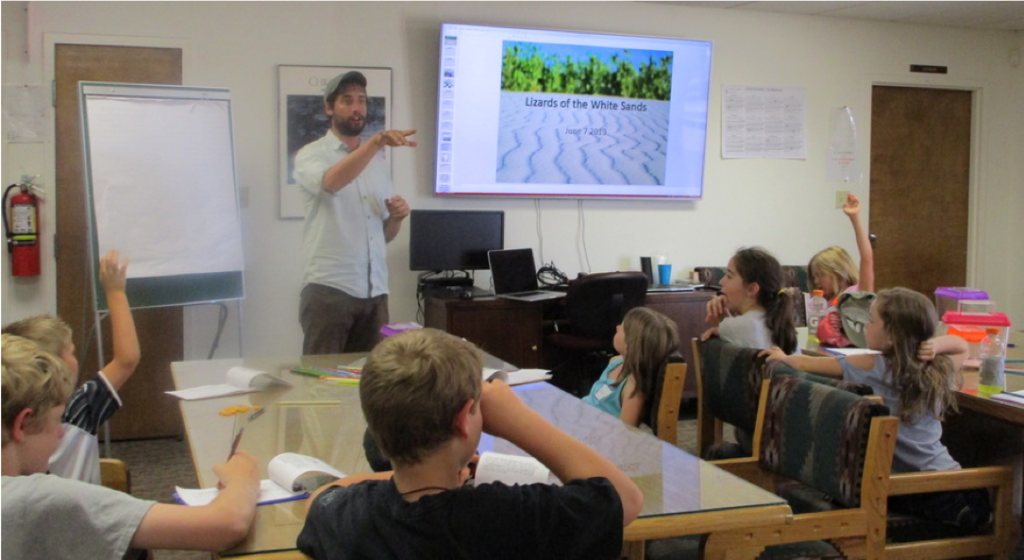
About Clay
Clay is an ecologist who uses careful observation and experimental manipulation to better understand the natural history of ecological communities. His PhD work, exploring the ecological consequences of changes in diversity in White Sands, New Mexico, allowed him to delve into his love of deserts and reptiles. Sharing this passion with others through teaching, mentorship and outreach is a cornerstone of his work and has been a highlight of his time at Berkeley.
Dissertation title:
The ecological consequences of low diversity in White Sands, New Mexico
The global extinction crisis has thrown the importance of fundamental ecological questions into sharp relief. What are the consequences of the addition or removal of species from a community? How do permutations to the length of food chains influence the role of species in communities?
My dissertation research addresses these basic questions by taking advantage of a natural experiment thousands of years in the making. The Tularosa Basin, in southern New Mexico, contains the unique landscape of White Sands (WS). This 650 km2 island of pure white gypsum sand dunes formed around 2,000 – 7,000 years ago and contrasts sharply with the surrounding Chihuahuan desert scrub. Out of the diverse suite of reptiles found in the desert scrub immediately surrounding the dunes (~40 species) only three have successfully invaded WS: Aspidoscelis inornata, Sceloporus cowlesi, and Holbrookia maculata. Not only have these lizards escaped most of their interspecific competitors, they have also largely escaped all of their major predators.
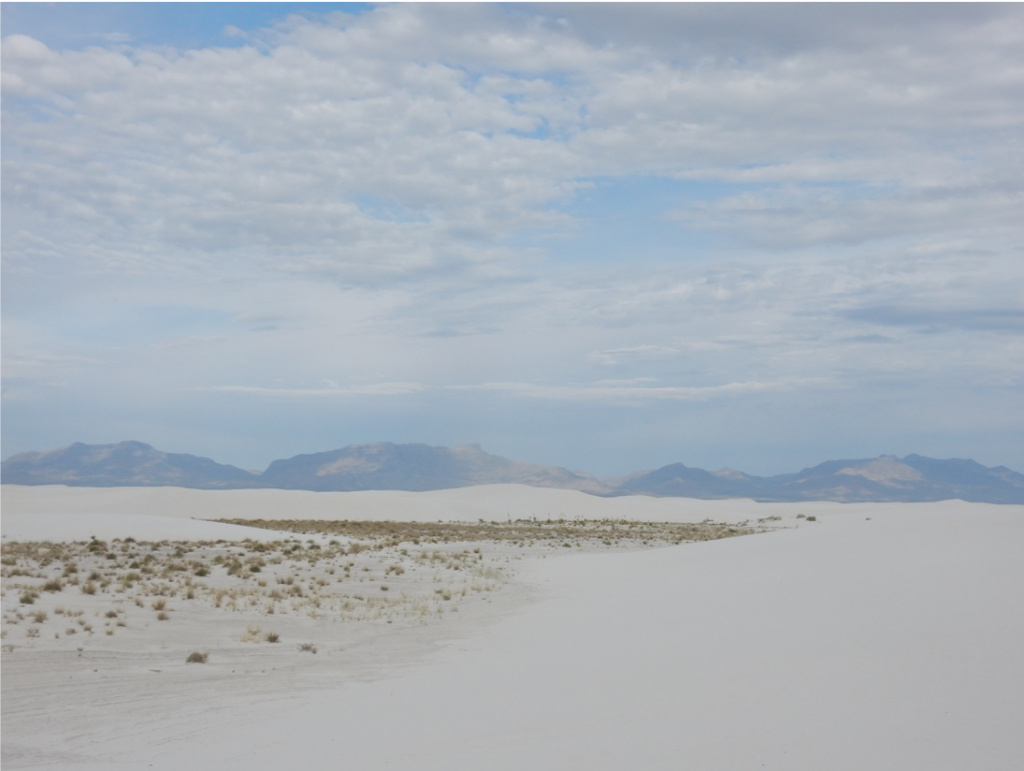
This dramatically different ecological context can lead to relaxed selection, which can lead to suite of changes known as ecological release. Most evidence for ecological release has been documented on oceanic islands, but prior research from the Rosenblum Lab had uncovered a suite of behavioral, dietary and morphological changes in the WS lizards consistent with ecological release (e.g. Refsnider et al. 2015). I was interested building on this work and investigating whether lizards in WS exhibited more inter-individual variation (or individual specialization) in diet. This specialization should theoretically be occurring as resources become available due to lack of interspecific competition and predation, and as increased conspecific densities drive individuals to seek additional resources.
RIGHT: Crotalus atrox, a lizard predator, on the ecotone between White Sands and the surrounding desert scrub.
To test this hypothesis, I set up a series of lizard traps in WS, the surrounding desert scrub, and in the ecotone (border) between the habitats. The ecotone is especially exciting in WS because it is similar in structure to the interior of the dunes, but has more competitors and predators. Using a combination of lizard stomach contents, and isotopes from lizards and their prey, I built a series of models that allowed me to quantify the prevalence of specialization in the study populations.
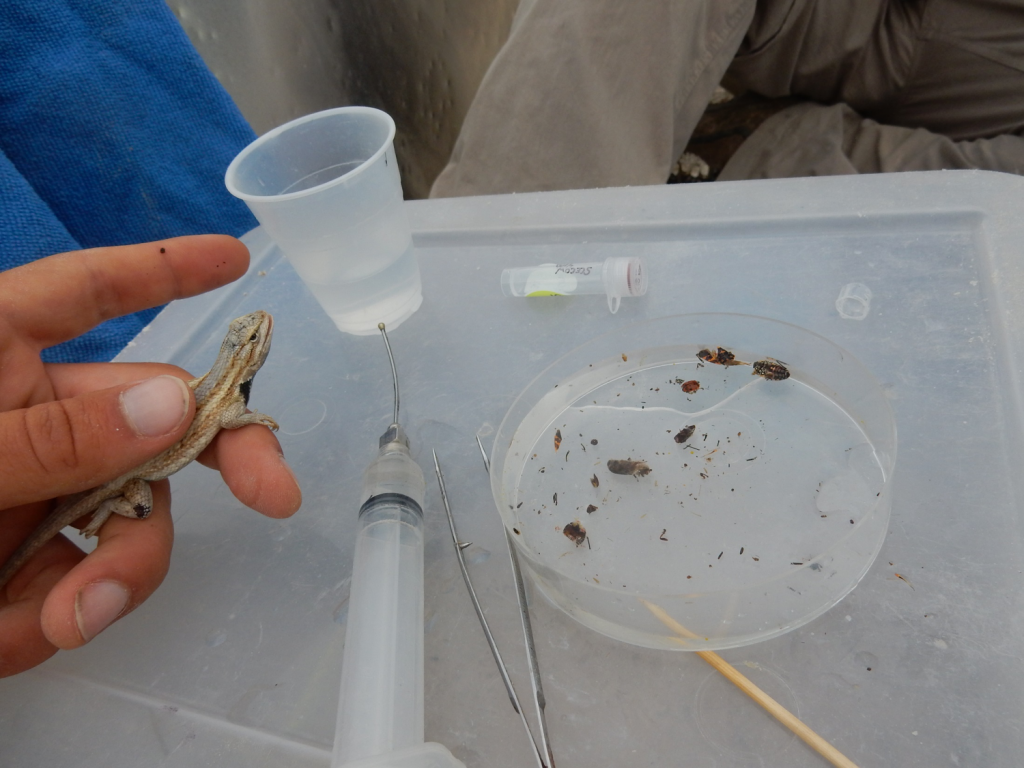
The results are striking. Carbon isotopes – which in predators can help us understand what plants their prey are consuming – show more specialization in WS populations of all three lizard species. Nitrogen isotopes – which indicate where on a food chain an organism is – show no such pattern. This may seem contradictory, but could be because food webs are made up of multiple interacting food chains, so lizards could be eating arthropods that consume different plants (reflected in carbon) , but are at similar trophic levels (reflected by nitrogen). Evolutionarily, these results support the idea that the adaptive radiations we see on oceanic islands could be driven partly by escape from competitors and predators. Ecologically, these results have important implications for interactions strengths within food webs and population stability dynamics (Noss and Rosenblum, in prep).
Another significant part of my PhD has involved experimentally inducing trophic cascades in WS. Trophic cascades are permutations across at least two links in a food chain, and are most frequently invoked when there are shifts in the primary trophic level (plants) caused by changes at least two trophic levels above plants. Although trophic cascades are often described as ubiquitous and have been demonstrated to be important processes in many communities, there is currently a serious lack of data from many ecosystems testing this hypothesis, including deserts. Historically, it has also been thought that biotic interactions are relatively unimportant in deserts, as abiotic conditions (moisture, temperature) are so extreme that they are largely regulating communities. However, lizard densities are very high in WS, possibly due to the ecological release they have experienced. Furthermore, relatively depauperate systems like WS should have less reticulate food webs, which may also strengthen trophic cascades. I, therefore, hypothesized that despite the extreme abiotic conditions at WS, lizards in this system exert strong top-down effects on arthropods which cascade down to plants.
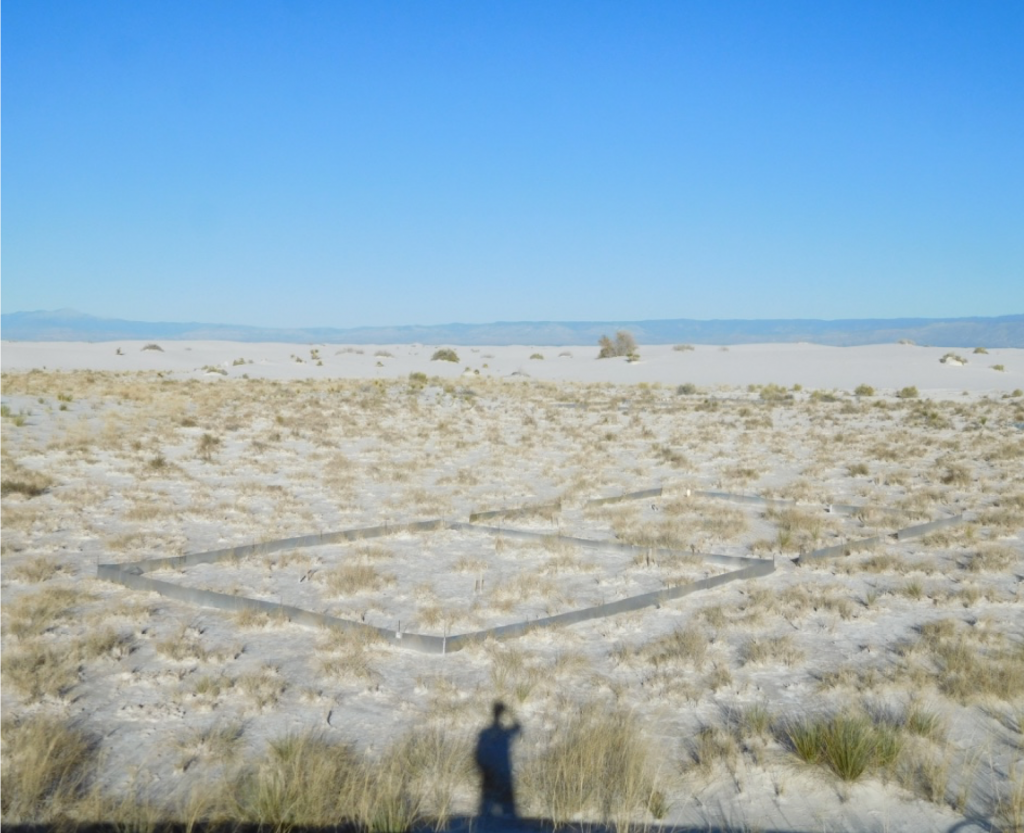
To test this hypothesis I built a series of 10×10 meter lizard exclosures in WS and measured response variables associated with arthropods and plants for two years. Arthropods were captured using the complementary techniques of sticky and pitfall traps, and identified in the lab to Family or Order. For plants, I measured community composition, growth, reproduction and herbivory (leaf damage caused by insects). I found that removing lizards can indeed affect lower trophic levels. While I found no effect on plant community composition or growth, I did find an increase in herbivory on some plant species, and an increase in reproduction in others. Many arthropod groups, mostly herbivorous, declined following lizard exclusion. Only one group – spiders – increased after lizards were removed. Overall this demonstrates that an important trophic role of lizards in WS is to limit spider densities, which then has indirect impacts on other arthropods and plants. The impact of exclusion also varied widely with season, which echoes what many of these types of experiments find. More generally I hope that this study spurs more investigations for trophic cascades in deserts, and in the trophic role that reptiles may be playing in other, more diverse, communities (Noss and Rosenblum, in prep).
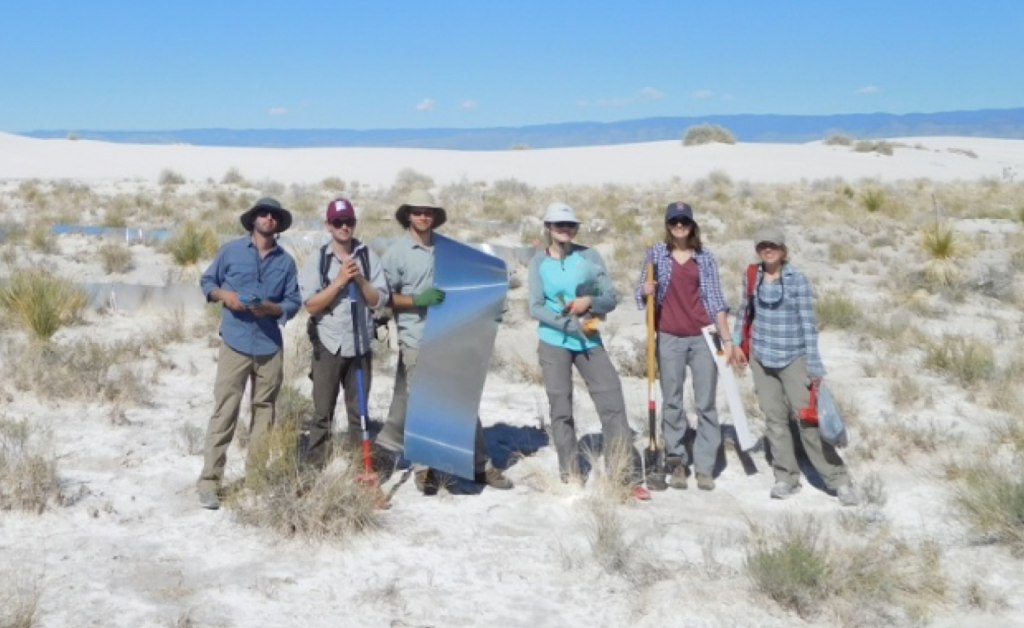
Clay’s dissertation research has been funded by the following agencies and awards
- Museum of Vertebrate Zoology
- The Herpetologists’ League
- The American Society for Ichthyologists and Herpetologists
- The National Science Foundation
- The Philomathia Foundation

